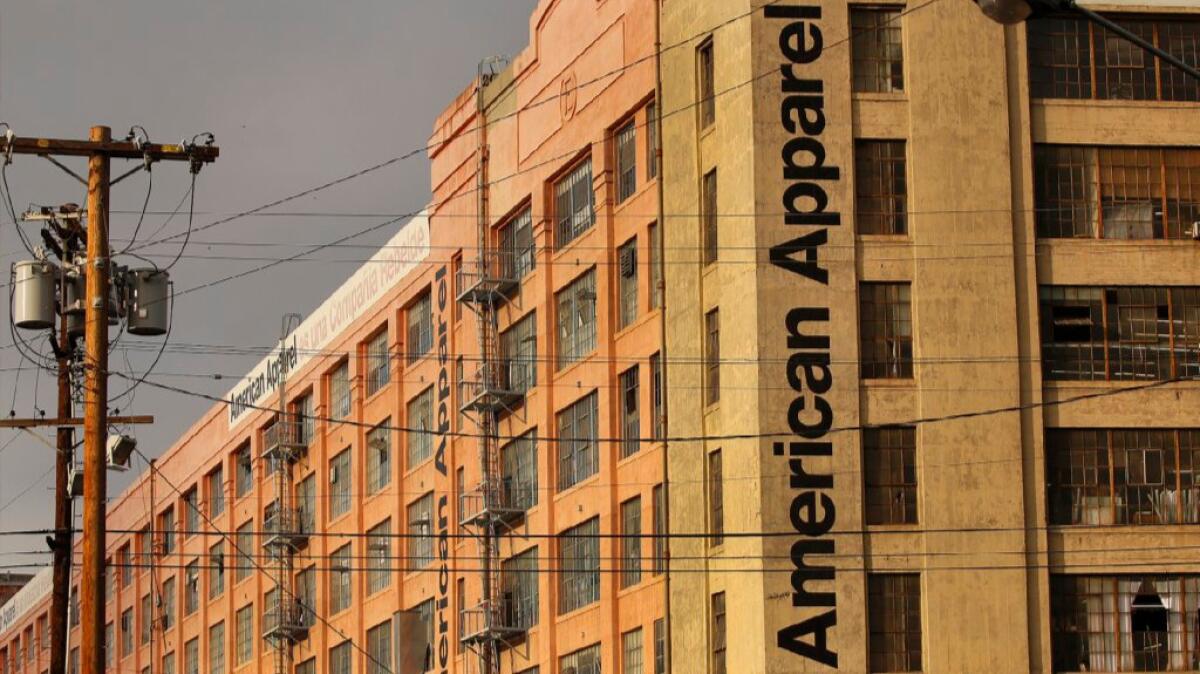Possible shake-up at American Apparel: CEO Paula Schneider is expected to exit post

Paula Schneider plans to exit her post as American Apparel chief executive Oct. 3, WWD has learned. She is to be succeeded by the company’s general counsel and chief administrative officer, Chelsea Grayson, who is in the process of transitioning into the role.
The change comes on the heels of the recent departure of former Liz Claiborne Inc. chairman and CEO Paul R. Charron, who was appointed to lead the board in March. He was succeeded by Brad Scher.
A company spokeswoman declined to comment.
The moves come as the company explores a possible sale of all or parts of the business, although a company source said it was Schneider’s decision to leave the post and had nothing to do with American Apparel’s bondholders or potential buyers. Charron’s departure, the source said, was aimed at providing the board with a stronger financial position as it navigates a turnaround and shops for investors.
Scher is founder and managing member of New York consulting firm Ocean Ridge Capital Advisors. American Apparel’s “been evaluating opportunities to attract investors to fuel the growth of the brand,” Scher said in a letter distributed to company employees today and obtained by WWD. He added in his letter “business will continue as usual. You will keep your current salary, and at the same hours. Everyone will come to work, do their jobs and get paid on payday. You will continue to report to your existing supervisor.”
Schneider, who joined the firm in late 2014, in her resignation letter to the board, which was also obtained by WWD, said “the [turnaround] plan has been laid out and much of the heavy lifting and the hard work has been done.” Still, the executive seemed to hint the potential sale had some bearing on her decision saying “the sale process currently underway for all or part of the company may not enable us to pursue the course of action necessary for the plan to succeed nor allow the brand to stay true to its ideals. Therefore, after much deliberation, and with a heavy heart, I’ve come to the conclusion it is time for me to resign as ceo.”
It’s the close of yet another phase in American Apparel’s more troubled recent past that began with the ouster of founder and former chief executive Dov Charney, who was terminated for cause, the reasoning of which Charney has vigorously disputed in and out of court. Schneider, who was appointed to helm the company, said at the time her focus included cutting stockkeeping units and bringing on new personnel, such as former Band of Outsiders designer Joseph Pickman to head up men’s design.
The tactics, which also included layoffs, did little to stave off a bankruptcy, which the company filed for last October. Charney made another go at getting back into American Apparel, aligning with Hagan Capital to buy the business for $300 million. Those plans were dashed and American Apparel exited Chapter 11 in February.
WWD reported in August the company hired Houlihan Lokey to explore a possible sale and earlier this month it was said Ron Burkle’s Yucaipa Cos. had looked at the company’s books.
American Apparel’s now entering a new phase of its turnaround with the bankruptcy behind it, the company source said.
“The owners really believe in the brand [and] really want the company to succeed moving forward and that’s why they’re looking for outside folks to come in and really help fuel the next stage of a turnaround,” said the source, who characterized the efforts to right the business as still in “early days.”
Grayson is said to be focused on the millennial customer but as for whether there will be major shifts in strategy, that appears to be up in the air.
The company, no longer public, has offered little in the way of insight as to how well the business has been doing. A source told WWD last month the business expects to cap revenue this calendar year at less than $350 million. A spokeswoman at the time declined to comment.




